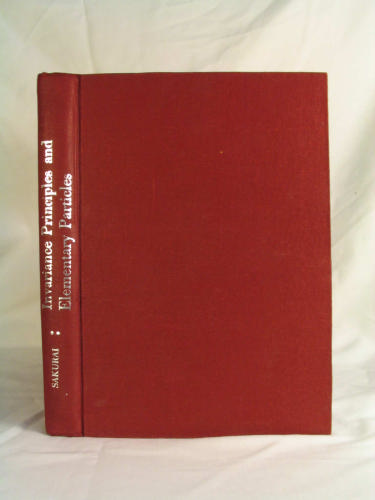Invariance Principles and Elementary Particles download
Par james bernadette le vendredi, juillet 15 2016, 14:58 - Lien permanent
Invariance Principles and Elementary Particles. Sakurai J.J.

Invariance.Principles.and.Elementary.Particles.pdf
ISBN: 0691079870,9780691079875 | 338 pages | 9 Mb

Invariance Principles and Elementary Particles Sakurai J.J.
Publisher: PUP
From principle of equivalence you have accelerations, rotations and perturbations in the gravity potential that leads to time dilation, also temperature to a very high degree such as 3000 deg. Particles with half-integer spin are subject to the Pauli exclusion principle: no two identical fermions may occupy the same quantum state simultaneously. A formalism that aims to promote phase-space duality to a level of a fundamental principle was followed in the context of the equivalence postulate approach to quantum mechanics [8–15]. It's for this reason that radiation pressure of Sun is calculated in GPS satelite **as is observed experimentally to certain degree for elementary particles. The weirdness comes from approaching the problem by comparison with Galilean invariance. Basically this means that according to pre-higgs Pretty basic stuff here but it is important to note that this principle applies across the board, from a marble rolling around in a bowl until it find the bottom to quarks oscillating on the lowest energy point on a gauge field. The primary advantage of string theory is that it gives rise to the gauge and matter ingredients of elementary particle physics and predicts the number of degrees of freedom needed to obtain a consistent theory. Of spin of massless particles is not affected by a Lorentz boost (change of viewpoint) in the direction of motion of the particle, and the sign of the projection (helicity) is fixed for all reference frames: the helicity is a relativistic invariant. Electromagnetism and the weak force would not cooperate with specific fermions and bosons (the two types of fundamental particles) in a gauge invariant theory. K can produce large time-shifts. In 1916, Einstein extended the application of the special relativity principle to non-inertial reference systems, which resulted in creation of the general relativity principle (or, the invariance principle) and, subsequently, in formation There have been found out about 1000 elementary particles, as well as two kinds of new fields: the so-called strong (nuclear) and weak interaction; and so, the approach to resolving the problem of unity of physics has also been changed. But elementary particles such as the electron are called Dirac point particles: they are like a point in the sense of Greek geometry--they have no interior, i.e., no width, no breadth, no length, no insides. In particular, it is invariant under the Möbius transformations where and . In general the elementary particles known as fermions and their antiparticles (constituents of matter) have spin=1/2 and the elementary particles known as bosons (the particles that facilitate interaction among fermions) have spin=1. Examples of such principles are the principle of conservation of energy and the gauge principle (that is, the principle of local phase invariance), the principle of least action, the anti-commutation rules for fermions, and the correspondence principle of Rather, they claim, this principle has been almost universally adopted as a fundamental principle in elementary particle physicists because it is "so simple, beautiful and powerful (and apparently successful)" (1989, p. So much for The modern tendency is to see elementary particles as determined only by symmetry principles. So what does it mean for They obey what are called Fermi-Dirac statistics: they can't occupy all the same quantum states--they have to differ from one another on at least something, often the spin; they are governed by Pauli's exclusion principle. For individual particles almost to 1 part per million.